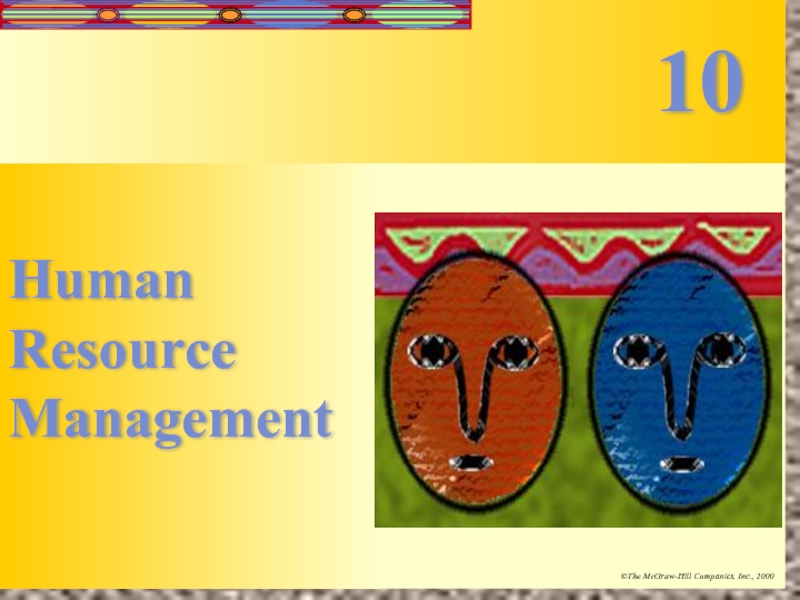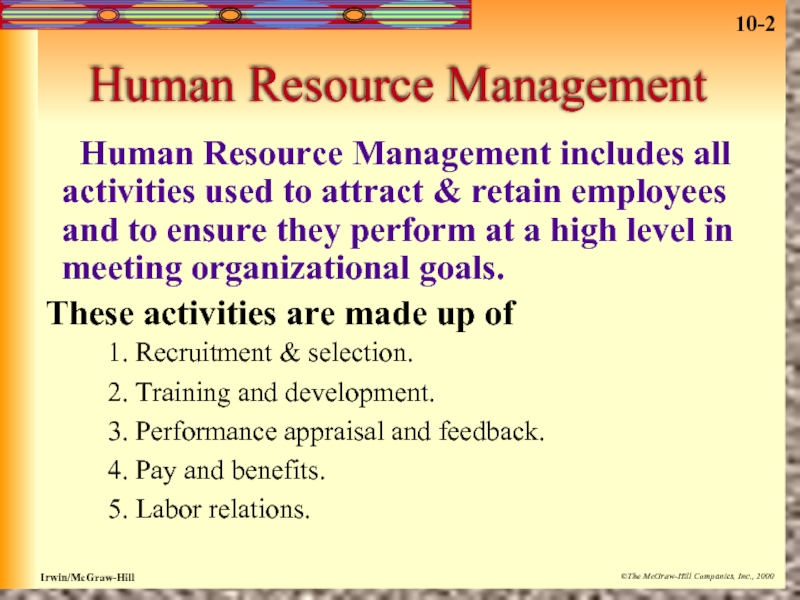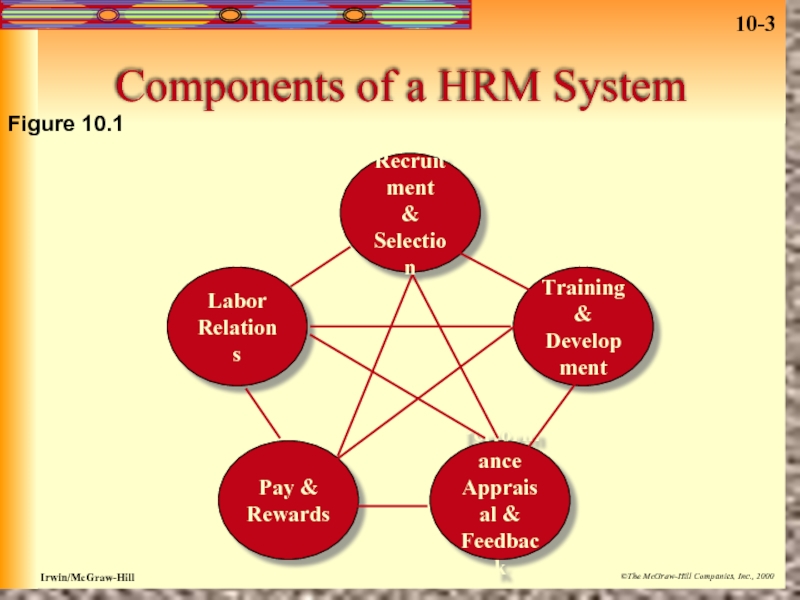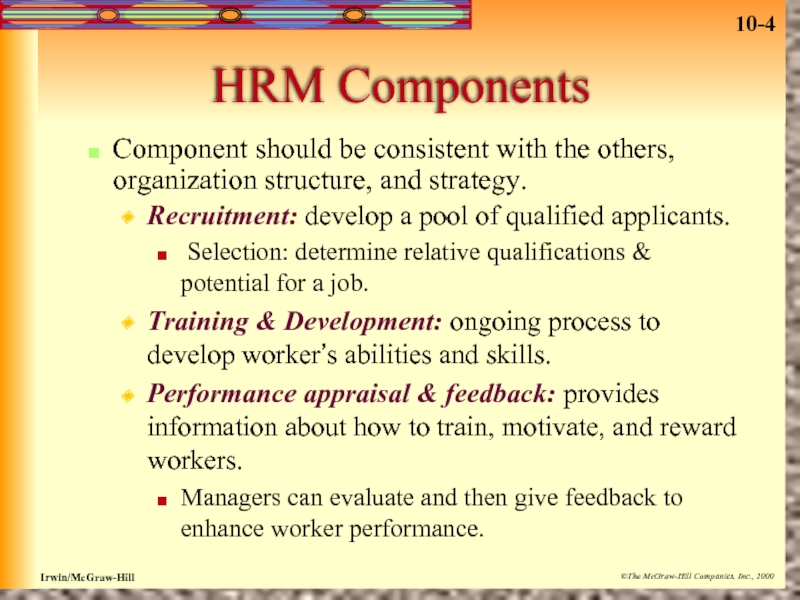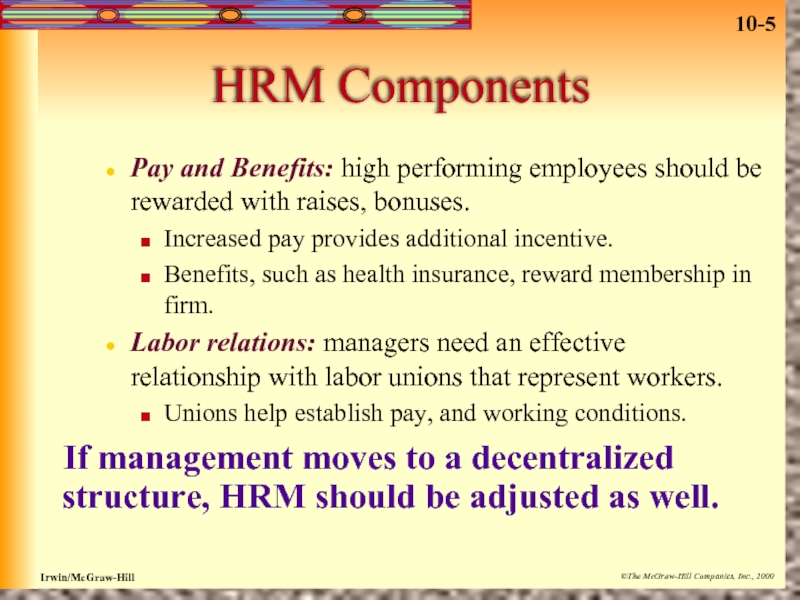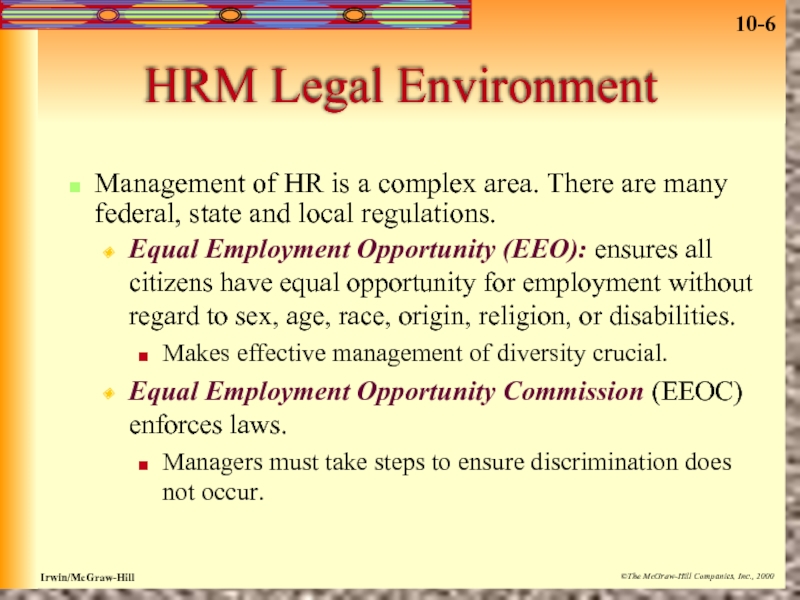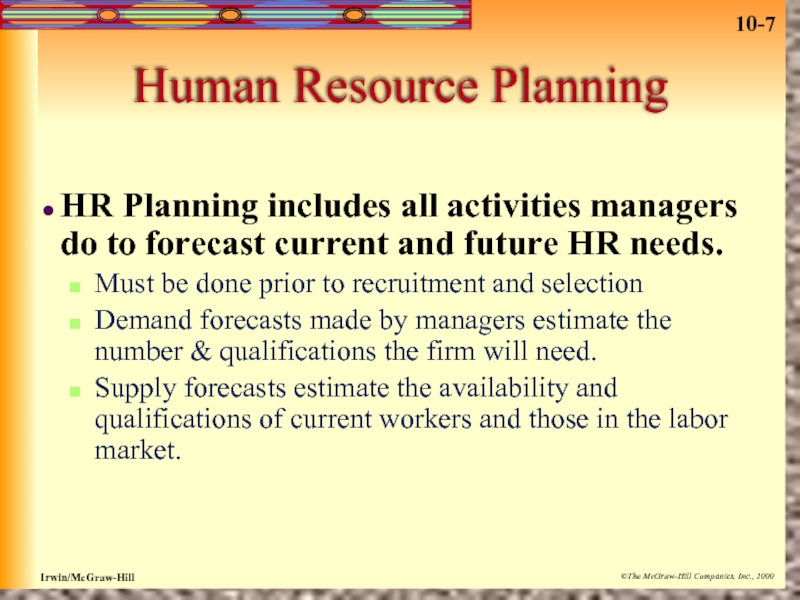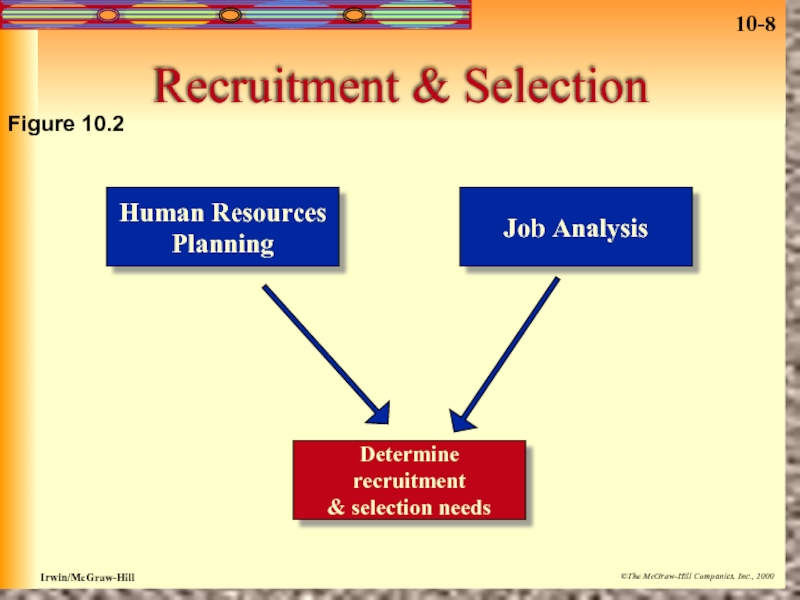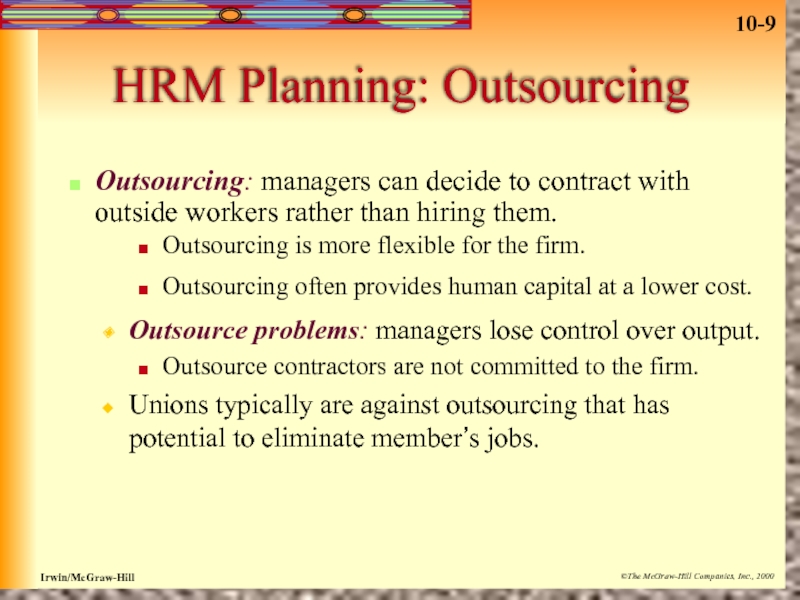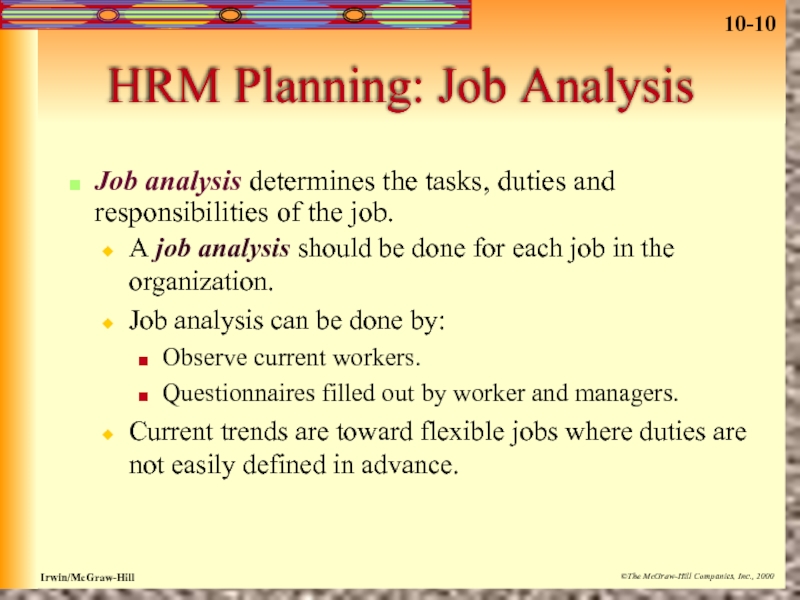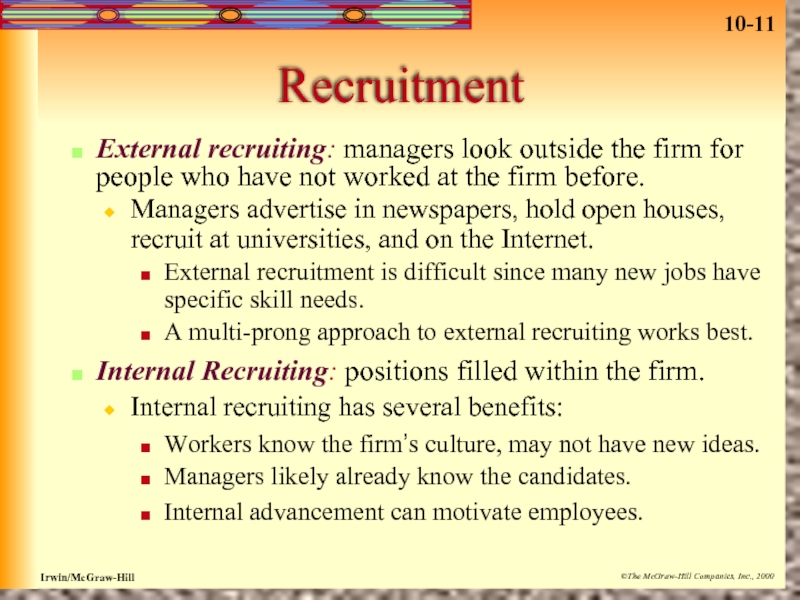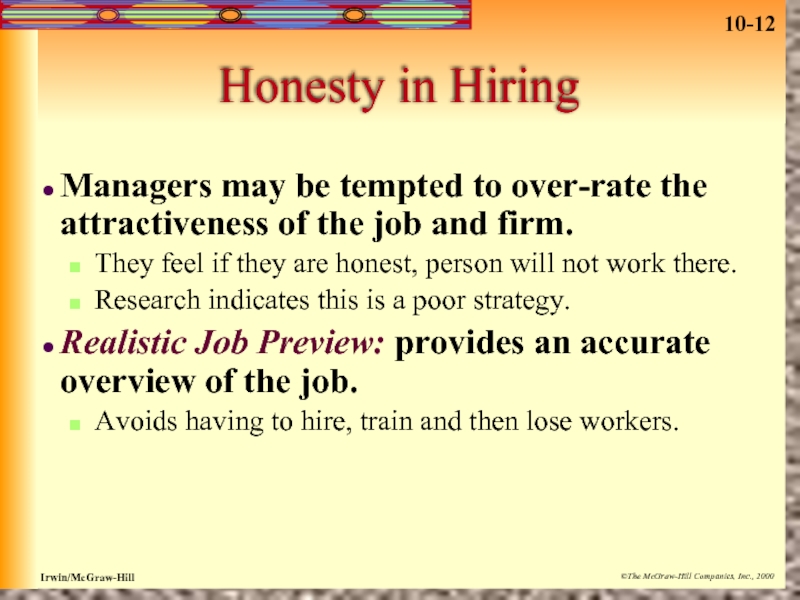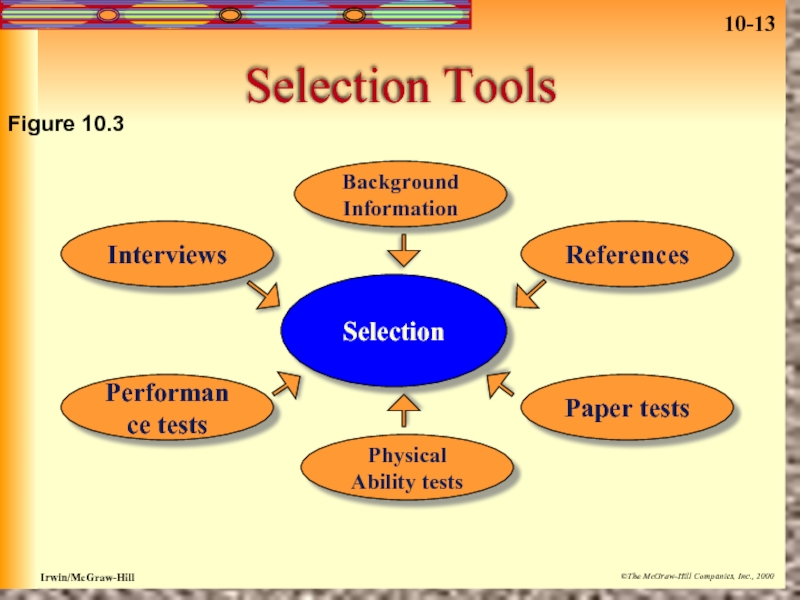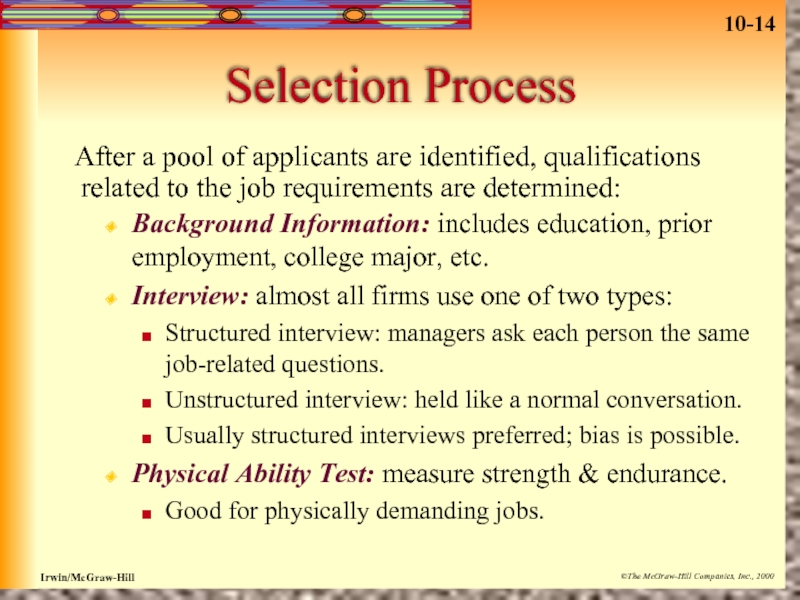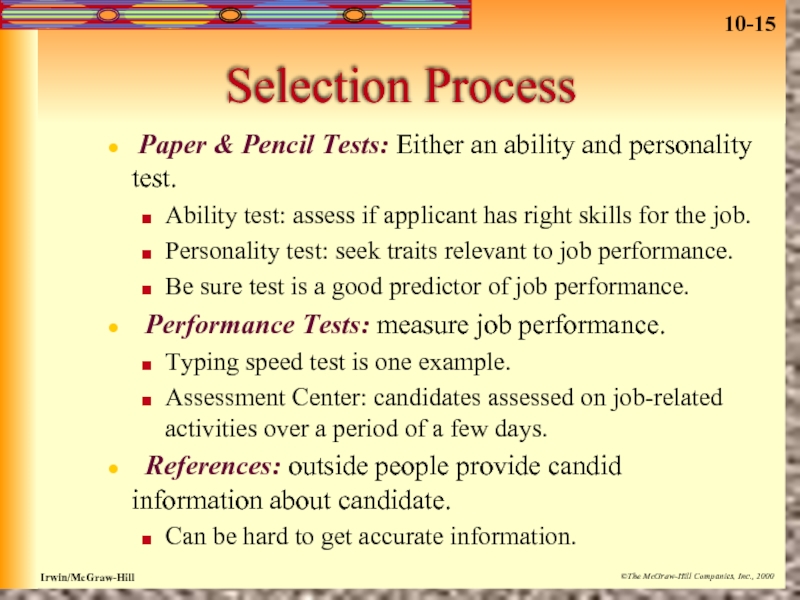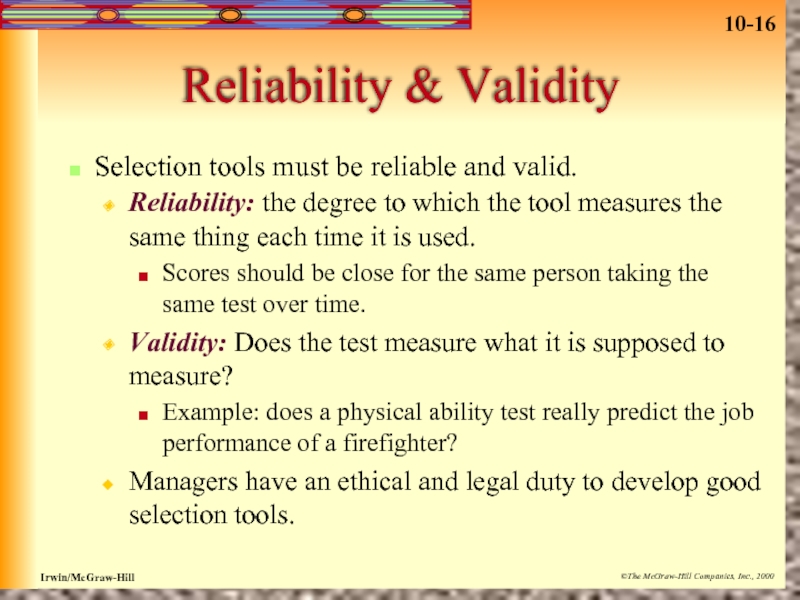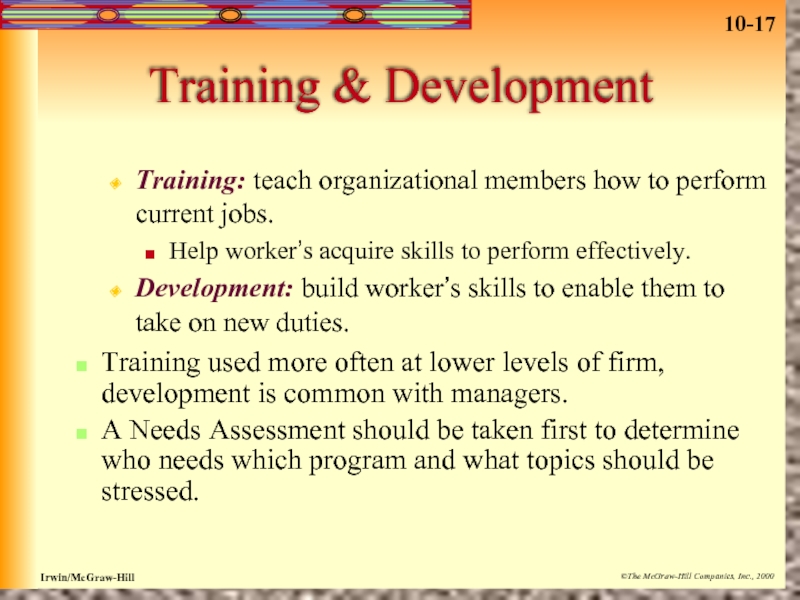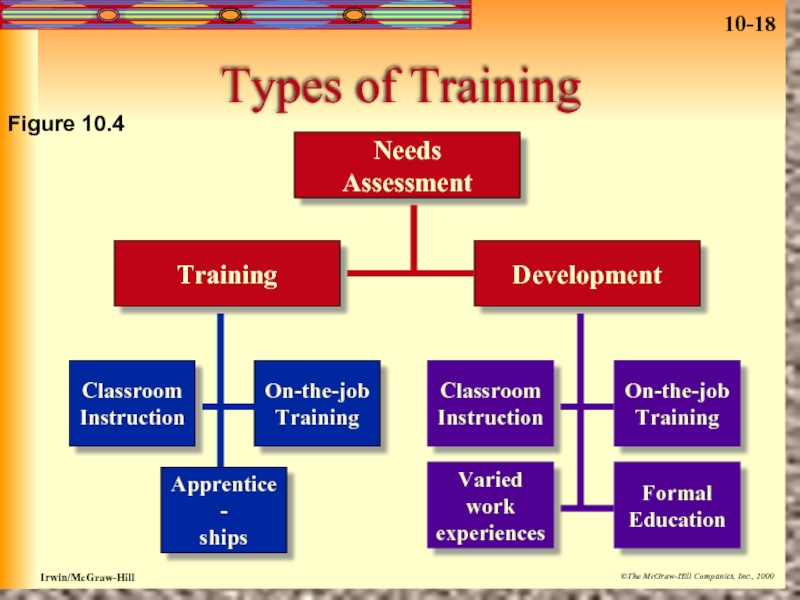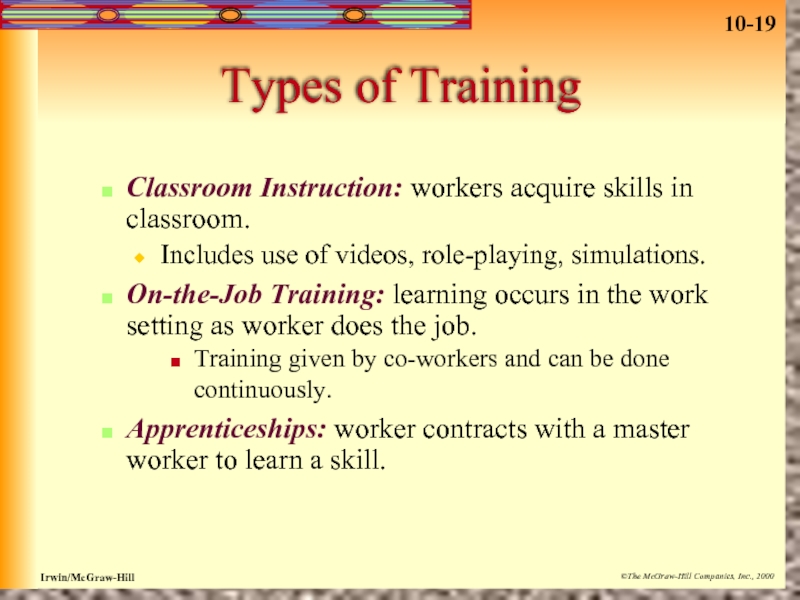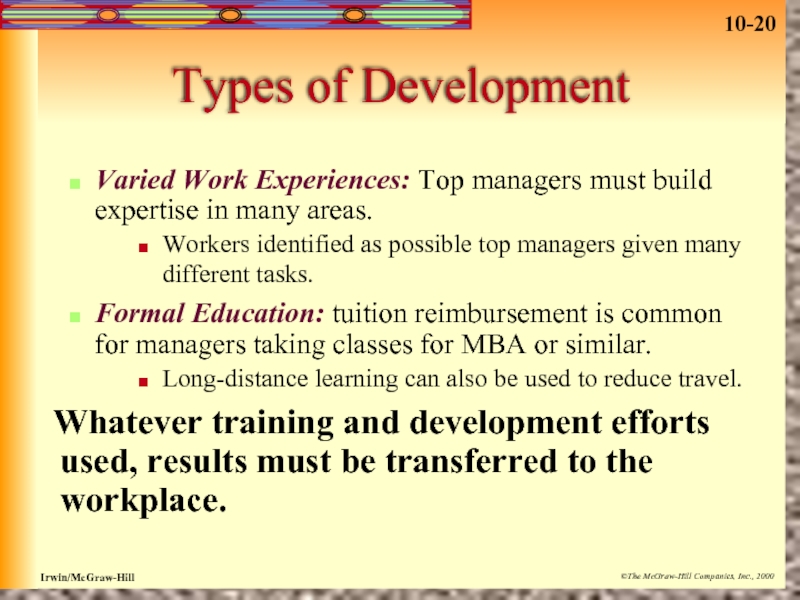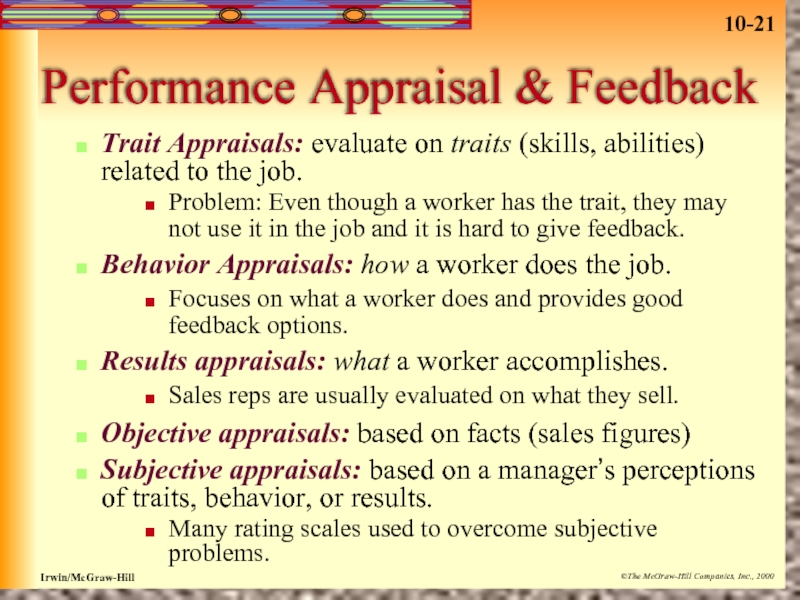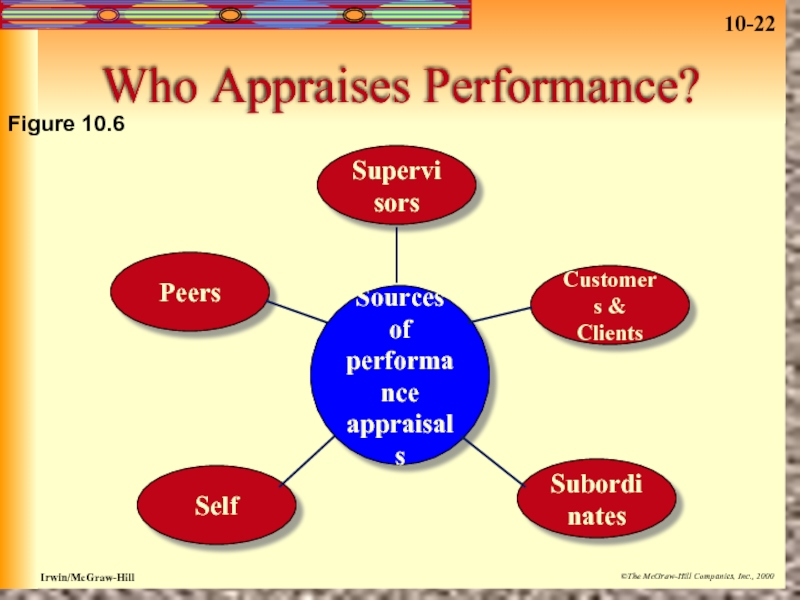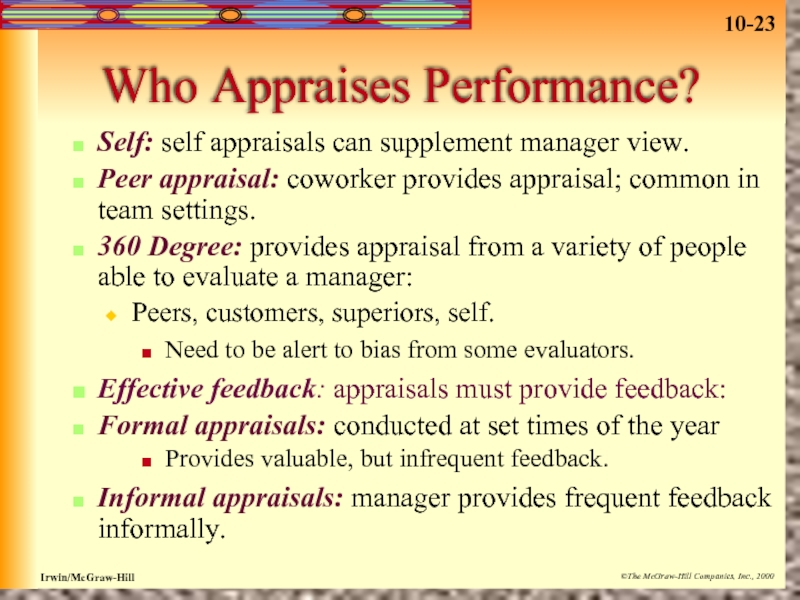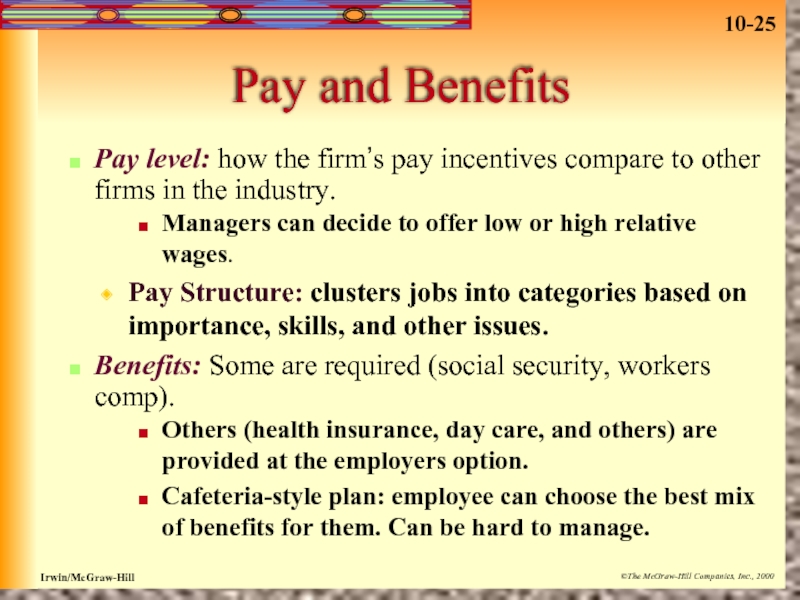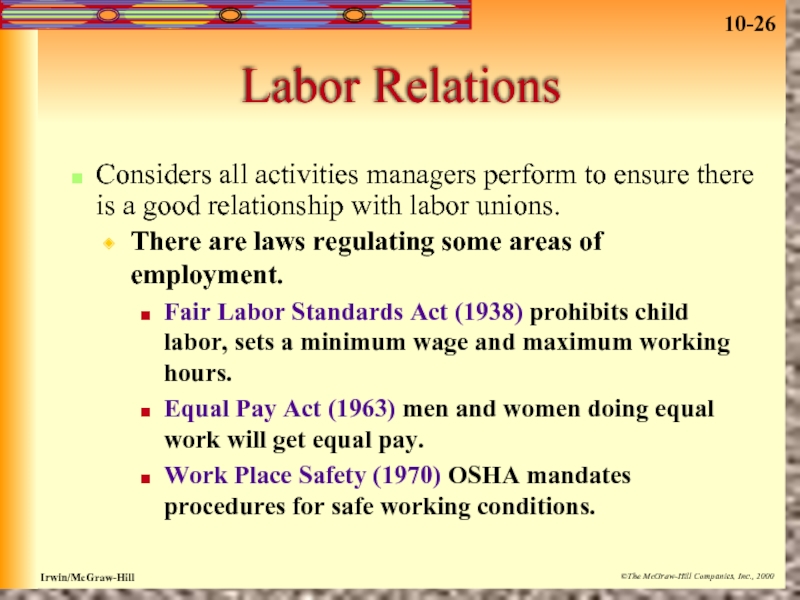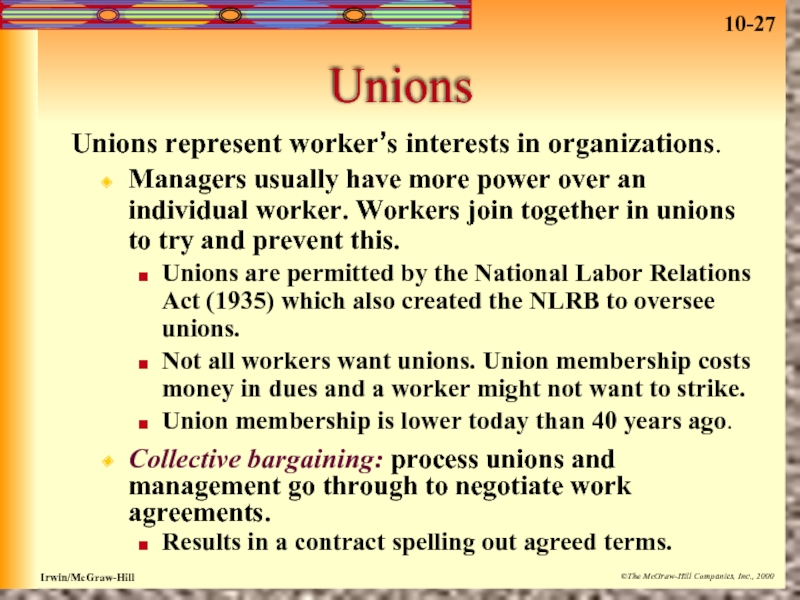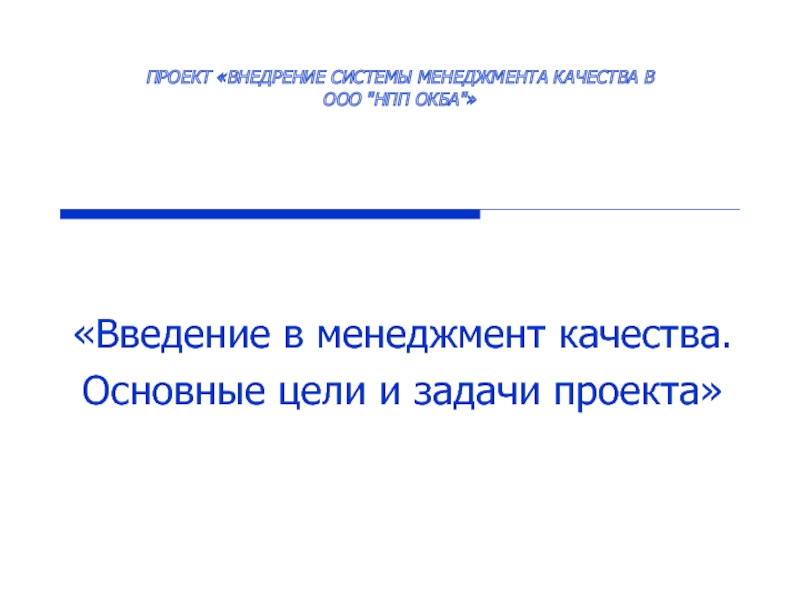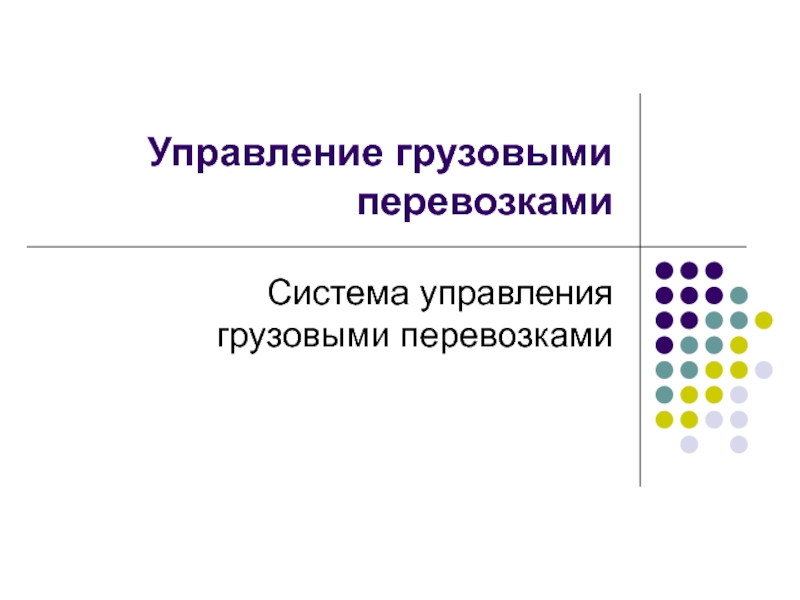- Главная
- Разное
- Дизайн
- Бизнес и предпринимательство
- Аналитика
- Образование
- Развлечения
- Красота и здоровье
- Финансы
- Государство
- Путешествия
- Спорт
- Недвижимость
- Армия
- Графика
- Культурология
- Еда и кулинария
- Лингвистика
- Английский язык
- Астрономия
- Алгебра
- Биология
- География
- Детские презентации
- Информатика
- История
- Литература
- Маркетинг
- Математика
- Медицина
- Менеджмент
- Музыка
- МХК
- Немецкий язык
- ОБЖ
- Обществознание
- Окружающий мир
- Педагогика
- Русский язык
- Технология
- Физика
- Философия
- Химия
- Шаблоны, картинки для презентаций
- Экология
- Экономика
- Юриспруденция
Human resource management. (Session 7.10) презентация
Содержание
- 1. Human resource management. (Session 7.10)
- 2. Human Resource Management Human Resource Management includes
- 3. Components of a HRM System Recruitment &
- 4. HRM Components Component should be consistent with
- 5. HRM Components Pay and Benefits: high performing
- 6. HRM Legal Environment Management of HR is
- 7. Human Resource Planning HR Planning includes all
- 8. Recruitment & Selection Human Resources Planning Job
- 9. HRM Planning: Outsourcing Outsourcing: managers can decide
- 10. HRM Planning: Job Analysis Job analysis determines
- 11. Recruitment External recruiting: managers look outside the
- 12. Honesty in Hiring Managers may be tempted
- 13. Selection Tools Background Information Interviews References Paper
- 14. Selection Process After a pool of applicants
- 15. Selection Process Paper & Pencil Tests:
- 16. Reliability & Validity Selection tools must be
- 17. Training & Development Training: teach organizational members
- 18. Types of Training Training Development Apprentice- ships
- 19. Types of Training Classroom Instruction: workers acquire
- 20. Types of Development Varied Work Experiences: Top
- 21. Performance Appraisal & Feedback Trait Appraisals: evaluate
- 22. Who Appraises Performance? Supervisors Peers Customers &
- 23. Who Appraises Performance? Self: self appraisals can
- 24. Effective Feedback: 1. Be specific and focus
- 25. Pay and Benefits Pay level: how the
- 26. Labor Relations Considers all activities managers perform
- 27. Unions Unions represent worker’s interests in organizations.
Слайд 2Human Resource Management
Human Resource Management includes all activities used to attract
& retain employees and to ensure they perform at a high level in meeting organizational goals.
These activities are made up of
1. Recruitment & selection.
2. Training and development.
3. Performance appraisal and feedback.
4. Pay and benefits.
5. Labor relations.
These activities are made up of
1. Recruitment & selection.
2. Training and development.
3. Performance appraisal and feedback.
4. Pay and benefits.
5. Labor relations.
Слайд 3Components of a HRM System
Recruitment
& Selection
Labor
Relations
Pay &
Rewards
Performance
Appraisal &
Feedback
Training &
Development
Figure 10.1
Слайд 4HRM Components
Component should be consistent with the others, organization structure, and
strategy.
Recruitment: develop a pool of qualified applicants.
Selection: determine relative qualifications & potential for a job.
Training & Development: ongoing process to develop worker’s abilities and skills.
Performance appraisal & feedback: provides information about how to train, motivate, and reward workers.
Managers can evaluate and then give feedback to enhance worker performance.
Recruitment: develop a pool of qualified applicants.
Selection: determine relative qualifications & potential for a job.
Training & Development: ongoing process to develop worker’s abilities and skills.
Performance appraisal & feedback: provides information about how to train, motivate, and reward workers.
Managers can evaluate and then give feedback to enhance worker performance.
Слайд 5HRM Components
Pay and Benefits: high performing employees should be rewarded with
raises, bonuses.
Increased pay provides additional incentive.
Benefits, such as health insurance, reward membership in firm.
Labor relations: managers need an effective relationship with labor unions that represent workers.
Unions help establish pay, and working conditions.
If management moves to a decentralized structure, HRM should be adjusted as well.
Increased pay provides additional incentive.
Benefits, such as health insurance, reward membership in firm.
Labor relations: managers need an effective relationship with labor unions that represent workers.
Unions help establish pay, and working conditions.
If management moves to a decentralized structure, HRM should be adjusted as well.
Слайд 6HRM Legal Environment
Management of HR is a complex area. There are
many federal, state and local regulations.
Equal Employment Opportunity (EEO): ensures all citizens have equal opportunity for employment without regard to sex, age, race, origin, religion, or disabilities.
Makes effective management of diversity crucial.
Equal Employment Opportunity Commission (EEOC) enforces laws.
Managers must take steps to ensure discrimination does not occur.
Equal Employment Opportunity (EEO): ensures all citizens have equal opportunity for employment without regard to sex, age, race, origin, religion, or disabilities.
Makes effective management of diversity crucial.
Equal Employment Opportunity Commission (EEOC) enforces laws.
Managers must take steps to ensure discrimination does not occur.
Слайд 7Human Resource Planning
HR Planning includes all activities managers do to forecast
current and future HR needs.
Must be done prior to recruitment and selection
Demand forecasts made by managers estimate the number & qualifications the firm will need.
Supply forecasts estimate the availability and qualifications of current workers and those in the labor market.
Must be done prior to recruitment and selection
Demand forecasts made by managers estimate the number & qualifications the firm will need.
Supply forecasts estimate the availability and qualifications of current workers and those in the labor market.
Слайд 8Recruitment & Selection
Human Resources
Planning
Job Analysis
Determine recruitment
& selection needs
Figure 10.2
Слайд 9HRM Planning: Outsourcing
Outsourcing: managers can decide to contract with outside workers
rather than hiring them.
Outsourcing is more flexible for the firm.
Outsourcing often provides human capital at a lower cost.
Outsource problems: managers lose control over output.
Outsource contractors are not committed to the firm.
Unions typically are against outsourcing that has potential to eliminate member’s jobs.
Outsourcing is more flexible for the firm.
Outsourcing often provides human capital at a lower cost.
Outsource problems: managers lose control over output.
Outsource contractors are not committed to the firm.
Unions typically are against outsourcing that has potential to eliminate member’s jobs.
Слайд 10HRM Planning: Job Analysis
Job analysis determines the tasks, duties and responsibilities
of the job.
A job analysis should be done for each job in the organization.
Job analysis can be done by:
Observe current workers.
Questionnaires filled out by worker and managers.
Current trends are toward flexible jobs where duties are not easily defined in advance.
A job analysis should be done for each job in the organization.
Job analysis can be done by:
Observe current workers.
Questionnaires filled out by worker and managers.
Current trends are toward flexible jobs where duties are not easily defined in advance.
Слайд 11Recruitment
External recruiting: managers look outside the firm for people who have
not worked at the firm before.
Managers advertise in newspapers, hold open houses, recruit at universities, and on the Internet.
External recruitment is difficult since many new jobs have specific skill needs.
A multi-prong approach to external recruiting works best.
Internal Recruiting: positions filled within the firm.
Internal recruiting has several benefits:
Workers know the firm’s culture, may not have new ideas.
Managers likely already know the candidates.
Internal advancement can motivate employees.
Managers advertise in newspapers, hold open houses, recruit at universities, and on the Internet.
External recruitment is difficult since many new jobs have specific skill needs.
A multi-prong approach to external recruiting works best.
Internal Recruiting: positions filled within the firm.
Internal recruiting has several benefits:
Workers know the firm’s culture, may not have new ideas.
Managers likely already know the candidates.
Internal advancement can motivate employees.
Слайд 12Honesty in Hiring
Managers may be tempted to over-rate the attractiveness of
the job and firm.
They feel if they are honest, person will not work there.
Research indicates this is a poor strategy.
Realistic Job Preview: provides an accurate overview of the job.
Avoids having to hire, train and then lose workers.
They feel if they are honest, person will not work there.
Research indicates this is a poor strategy.
Realistic Job Preview: provides an accurate overview of the job.
Avoids having to hire, train and then lose workers.
Слайд 13Selection Tools
Background
Information
Interviews
References
Paper tests
Physical
Ability tests
Performance tests
Selection
Figure 10.3
Слайд 14Selection Process
After a pool of applicants are identified, qualifications related to
the job requirements are determined:
Background Information: includes education, prior employment, college major, etc.
Interview: almost all firms use one of two types:
Structured interview: managers ask each person the same job-related questions.
Unstructured interview: held like a normal conversation.
Usually structured interviews preferred; bias is possible.
Physical Ability Test: measure strength & endurance.
Good for physically demanding jobs.
Background Information: includes education, prior employment, college major, etc.
Interview: almost all firms use one of two types:
Structured interview: managers ask each person the same job-related questions.
Unstructured interview: held like a normal conversation.
Usually structured interviews preferred; bias is possible.
Physical Ability Test: measure strength & endurance.
Good for physically demanding jobs.
Слайд 15Selection Process
Paper & Pencil Tests: Either an ability and personality
test.
Ability test: assess if applicant has right skills for the job.
Personality test: seek traits relevant to job performance.
Be sure test is a good predictor of job performance.
Performance Tests: measure job performance.
Typing speed test is one example.
Assessment Center: candidates assessed on job-related activities over a period of a few days.
References: outside people provide candid information about candidate.
Can be hard to get accurate information.
Ability test: assess if applicant has right skills for the job.
Personality test: seek traits relevant to job performance.
Be sure test is a good predictor of job performance.
Performance Tests: measure job performance.
Typing speed test is one example.
Assessment Center: candidates assessed on job-related activities over a period of a few days.
References: outside people provide candid information about candidate.
Can be hard to get accurate information.
Слайд 16Reliability & Validity
Selection tools must be reliable and valid.
Reliability: the degree
to which the tool measures the same thing each time it is used.
Scores should be close for the same person taking the same test over time.
Validity: Does the test measure what it is supposed to measure?
Example: does a physical ability test really predict the job performance of a firefighter?
Managers have an ethical and legal duty to develop good selection tools.
Scores should be close for the same person taking the same test over time.
Validity: Does the test measure what it is supposed to measure?
Example: does a physical ability test really predict the job performance of a firefighter?
Managers have an ethical and legal duty to develop good selection tools.
Слайд 17Training & Development
Training: teach organizational members how to perform current jobs.
Help
worker’s acquire skills to perform effectively.
Development: build worker’s skills to enable them to take on new duties.
Training used more often at lower levels of firm, development is common with managers.
A Needs Assessment should be taken first to determine who needs which program and what topics should be stressed.
Development: build worker’s skills to enable them to take on new duties.
Training used more often at lower levels of firm, development is common with managers.
A Needs Assessment should be taken first to determine who needs which program and what topics should be stressed.
Слайд 18Types of Training
Training
Development
Apprentice-
ships
On-the-job
Training
On-the-job
Training
Needs
Assessment
Figure 10.4
Слайд 19Types of Training
Classroom Instruction: workers acquire skills in classroom.
Includes use of
videos, role-playing, simulations.
On-the-Job Training: learning occurs in the work setting as worker does the job.
Training given by co-workers and can be done continuously.
Apprenticeships: worker contracts with a master worker to learn a skill.
On-the-Job Training: learning occurs in the work setting as worker does the job.
Training given by co-workers and can be done continuously.
Apprenticeships: worker contracts with a master worker to learn a skill.
Слайд 20Types of Development
Varied Work Experiences: Top managers must build expertise in
many areas.
Workers identified as possible top managers given many different tasks.
Formal Education: tuition reimbursement is common for managers taking classes for MBA or similar.
Long-distance learning can also be used to reduce travel.
Whatever training and development efforts used, results must be transferred to the workplace.
Workers identified as possible top managers given many different tasks.
Formal Education: tuition reimbursement is common for managers taking classes for MBA or similar.
Long-distance learning can also be used to reduce travel.
Whatever training and development efforts used, results must be transferred to the workplace.
Слайд 21Performance Appraisal & Feedback
Trait Appraisals: evaluate on traits (skills, abilities) related
to the job.
Problem: Even though a worker has the trait, they may not use it in the job and it is hard to give feedback.
Behavior Appraisals: how a worker does the job.
Focuses on what a worker does and provides good feedback options.
Results appraisals: what a worker accomplishes.
Sales reps are usually evaluated on what they sell.
Objective appraisals: based on facts (sales figures)
Subjective appraisals: based on a manager’s perceptions of traits, behavior, or results.
Many rating scales used to overcome subjective problems.
Problem: Even though a worker has the trait, they may not use it in the job and it is hard to give feedback.
Behavior Appraisals: how a worker does the job.
Focuses on what a worker does and provides good feedback options.
Results appraisals: what a worker accomplishes.
Sales reps are usually evaluated on what they sell.
Objective appraisals: based on facts (sales figures)
Subjective appraisals: based on a manager’s perceptions of traits, behavior, or results.
Many rating scales used to overcome subjective problems.
Слайд 22Who Appraises Performance?
Supervisors
Peers
Customers &
Clients
Subordinates
Self
Sources of
performance
appraisals
Figure 10.6
Слайд 23Who Appraises Performance?
Self: self appraisals can supplement manager view.
Peer appraisal: coworker
provides appraisal; common in team settings.
360 Degree: provides appraisal from a variety of people able to evaluate a manager:
Peers, customers, superiors, self.
Need to be alert to bias from some evaluators.
Effective feedback: appraisals must provide feedback:
Formal appraisals: conducted at set times of the year
Provides valuable, but infrequent feedback.
Informal appraisals: manager provides frequent feedback informally.
360 Degree: provides appraisal from a variety of people able to evaluate a manager:
Peers, customers, superiors, self.
Need to be alert to bias from some evaluators.
Effective feedback: appraisals must provide feedback:
Formal appraisals: conducted at set times of the year
Provides valuable, but infrequent feedback.
Informal appraisals: manager provides frequent feedback informally.
Слайд 24Effective Feedback:
1. Be specific and focus on correctable behavior. Provide a
suggested improvement.
2. Focus on problem-solving and improvement, not criticism.
3. Express confidence in worker’s ability to improve.
4. Use formal and informal feedback.
5. Treat subordinates with respect and praise achievements.
6. Set a timetable for agreed changes.
2. Focus on problem-solving and improvement, not criticism.
3. Express confidence in worker’s ability to improve.
4. Use formal and informal feedback.
5. Treat subordinates with respect and praise achievements.
6. Set a timetable for agreed changes.
Слайд 25Pay and Benefits
Pay level: how the firm’s pay incentives compare to
other firms in the industry.
Managers can decide to offer low or high relative wages.
Pay Structure: clusters jobs into categories based on importance, skills, and other issues.
Benefits: Some are required (social security, workers comp).
Others (health insurance, day care, and others) are provided at the employers option.
Cafeteria-style plan: employee can choose the best mix of benefits for them. Can be hard to manage.
Managers can decide to offer low or high relative wages.
Pay Structure: clusters jobs into categories based on importance, skills, and other issues.
Benefits: Some are required (social security, workers comp).
Others (health insurance, day care, and others) are provided at the employers option.
Cafeteria-style plan: employee can choose the best mix of benefits for them. Can be hard to manage.
Слайд 26Labor Relations
Considers all activities managers perform to ensure there is a
good relationship with labor unions.
There are laws regulating some areas of employment.
Fair Labor Standards Act (1938) prohibits child labor, sets a minimum wage and maximum working hours.
Equal Pay Act (1963) men and women doing equal work will get equal pay.
Work Place Safety (1970) OSHA mandates procedures for safe working conditions.
There are laws regulating some areas of employment.
Fair Labor Standards Act (1938) prohibits child labor, sets a minimum wage and maximum working hours.
Equal Pay Act (1963) men and women doing equal work will get equal pay.
Work Place Safety (1970) OSHA mandates procedures for safe working conditions.
Слайд 27Unions
Unions represent worker’s interests in organizations.
Managers usually have more power over
an individual worker. Workers join together in unions to try and prevent this.
Unions are permitted by the National Labor Relations Act (1935) which also created the NLRB to oversee unions.
Not all workers want unions. Union membership costs money in dues and a worker might not want to strike.
Union membership is lower today than 40 years ago.
Collective bargaining: process unions and management go through to negotiate work agreements.
Results in a contract spelling out agreed terms.
Unions are permitted by the National Labor Relations Act (1935) which also created the NLRB to oversee unions.
Not all workers want unions. Union membership costs money in dues and a worker might not want to strike.
Union membership is lower today than 40 years ago.
Collective bargaining: process unions and management go through to negotiate work agreements.
Results in a contract spelling out agreed terms.
